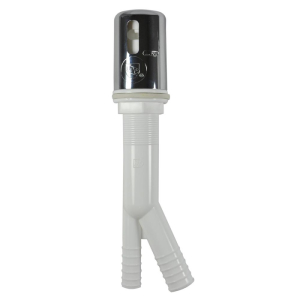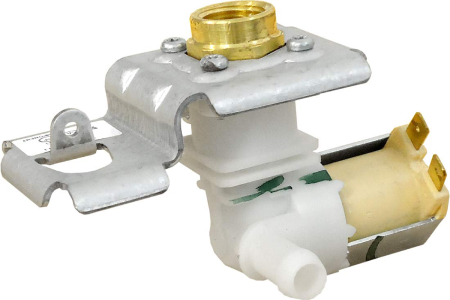If you’ve ever noticed a burning smell coming from your dishwasher, you know how concerning it can be. Not only does it indicate a potential problem with your appliance, but it can also be a safety hazard. In this beginner’s guide, we’ll explore the causes of a dishwasher smelling like burning and offer solutions to get it running safely and efficiently again.
Causes of a Dishwasher Smelling Like Burning
There are several reasons why your dishwasher might emit a burning smell. Understanding the root cause of the issue is crucial to resolving it effectively. Here are the most common reasons why your dishwasher smells like burning:
Obstruction in the Garbage Disposal
If you’re experiencing a burning smell coming from your dishwasher, it could be due to an obstruction in the garbage disposal. Here are some steps you can follow to address this issue:
- Turn off power to the dishwasher. This can be done by unplugging it or turning off the circuit breaker.
- Check the garbage disposal for any visible damage or debris. If you see any visible debris or damage, remove it with a pair of pliers or a soft cloth.
- Run hot water down the garbage disposal to help dissolve any remaining debris or buildup.
- Use a garbage disposal cleaner to remove any remaining buildup.
- Test the dishwasher to see if it is functioning properly.
Here are some additional tips to help you maintain the garbage disposal:
- Avoid putting large chunks of food or non-food items down the garbage disposal.
- Run the garbage disposal regularly to prevent buildup.
- Use cold water when running the garbage disposal, as hot water can cause grease to solidify and clog the drain.
Blockage in the Air Gap
If you’re experiencing a burning smell from dishwasher, it’s crucial to address it promptly to prevent potential damage or hazards. Here are some steps you can take to resolve this issue:
- Turn off power to the dishwasher. This can be done by unplugging it or turning off the circuit breaker.

- Locate the air gap. It is typically located on the countertop or sink.
- Check the air gap for any visible debris or buildup. If you see any visible debris or buildup, remove it with a soft cloth or a pair of pliers.
- Run hot water down the air gap to help dissolve any remaining debris or buildup.
- Use a small brush or pipe cleaner to clean out the air gap and remove any remaining debris.
- Test the dishwasher to see if it is functioning properly.
Here are some additional tips to help you maintain the air gap:
- Clean the air gap regularly to prevent buildup.
- Run hot water down the air gap after each use to help prevent buildup.
By addressing a burning smell from your dishwasher promptly and taking preventive measures, you can ensure the safety and optimal functioning of your appliance.
Accumulation of Dishwasher Detergent
If you experience a burning smell coming from your dishwasher during the wash cycle, it could be due to several factors. One common cause is the accumulation of dishwasher detergent, which can result in soap residue buildup. This buildup can clog the dishwasher’s drain, affect its cleaning performance, and lead to a burning smell. To address this issue:
- Stop using the dishwasher immediately and turn off power to the appliance by unplugging it or switching off the circuit breaker.
- Clean the dishwasher thoroughly to remove any soap residue. Start by removing any visible debris or excess detergent from the interior using a soft cloth or sponge.
- Run an empty cycle with a dishwasher cleaner or a mixture of vinegar and baking soda. Place a dishwasher-safe cup filled with vinegar on the top rack and sprinkle baking soda on the bottom of the dishwasher. Then, run a hot cycle to allow the cleaning solution to dissolve the soap residue and eliminate the burning smell.
- After the cleaning cycle, inspect the dishwasher’s drain for any remaining debris or clogs. Use a brush or pipe cleaner to gently remove any buildup in the drain area.
- Test the dishwasher with a small load of dishes to see if the burning smell persists. If the issue continues, it’s advisable to seek professional assistance from a dishwasher technician to diagnose and resolve the problem.
To prevent soap residue buildup and potential burning smells in the future:
- Use the appropriate amount of dishwasher detergent recommended by the manufacturer.
- Select a dishwasher detergent that is specifically designed for your dishwasher type.
- Regularly clean the dishwasher’s filter and check for any debris or blockages.
- Run periodic maintenance cycles with dishwasher cleaners or vinegar and baking soda to keep the appliance clean and free from soap residue buildup.
By following these steps and practicing proper dishwasher maintenance, you can eliminate the burning smell during the wash cycle and ensure optimal performance of your dishwasher.
Clog in the Sink Drain
Here are some tips and solutions to fix the problem of a clog in the sink drain causing a burning smell in your dishwasher:
- Remove Visible Debris: Remove any visible debris from the sink drain, such as food scraps, hair, or soap scum.
- Run Hot Water: Run hot water down the sink drain to clear out any remaining blockages. You can also add a small amount of dish soap to help break up grease and other debris.
- Use a Drain Cleaner: If the clog is severe, try using a drain cleaning solution or a plunger to clear the clog. Follow the manufacturer’s instructions carefully and use the appropriate safety precautions.
- Call a Professional Plumber: If the clog is still persistent and severe, it may be time to call a professional plumber to remove the clog.
- Proper Disposal of Food Scraps and Grease: To prevent future clogs, make sure to dispose of food scraps properly and avoid pouring grease or oil down the sink drain. You can use a strainer or mesh screen over the sink drain to catch food scraps and other debris.
Food Particles in the Drain
If you’re experiencing a burning smell coming from your dishwasher, it could be due to food particles in the dishwasher drain. Here are some steps you can follow to address this issue:
- Turn off power to the dishwasher. This can be done by unplugging it or turning off the circuit breaker.
- Remove any visible debris from the drain with a soft cloth or a pair of pliers.
- Use a dishwasher cleaner or a mixture of baking soda and vinegar to remove any remaining buildup in the drain.
- Run hot water down the drain to help dissolve any remaining debris.
- Test the dishwasher to see if it is functioning properly.
Here are some additional tips to help you maintain the dishwasher drain:
- Clean the dishwasher drain regularly to prevent buildup.
- Avoid putting large chunks of food or non-food items down the drain.
Clear Any Remaining Water from the Dishwasher
Before attempting to diagnose and resolve any issues with your dishwasher, it’s important to clear any remaining water from the appliance. Here are the steps to clear any remaining water from your dishwasher:
- Locate the drain at the bottom of the dishwasher. This is typically located at the back of the dishwasher, near the floor.
- Use a towel or sponge to absorb any excess water in the dishwasher. Wring out the towel or sponge as needed to remove the water.
- Once you have removed as much water as possible, pour a cup of water into the dishwasher and run a drain cycle. This will help to remove any remaining water from the appliance.
- Check the drain and drain hose for any blockages or kinks that may be preventing water from draining properly.
Examination of the Drain Hose
Here are some steps you can follow to address this issue:
- Turn off power to the dishwasher. This can be done by unplugging it or turning off the circuit breaker.
- Locate the drain hose. It is typically located at the back of the dishwasher.
- Disconnect the drain hose from the dishwasher and the sink drain.
- Inspect the hose for any signs of damage or debris. Look for cracks, splits, or kinks in the hose, and remove any visible debris with a soft cloth or a pair of pliers.
- Run hot water down the hose to help dissolve any remaining debris.
- Reconnect the hose to the dishwasher and sink drain.
- Test the dishwasher to see if it is functioning properly.
Here are some additional tips to help you maintain the drain hose:
- Check the hose regularly for any signs of damage or debris.
- Avoid kinking or crimping the hose, as this can cause water to back up.
Verification of the Check Valve
The check valve on your dishwasher is responsible for preventing wastewater from flowing back into the appliance. If the check valve is malfunctioning or blocked, it can cause water to back up and emit a burning smell. Here are the steps to verify the check valve on your dishwasher:

- Disconnect the power to your dishwasher by unplugging it or turning off the circuit breaker that powers it.
- Locate the check valve on your dishwasher. This is typically located near the drain hose or the drain pump.
- Remove the check valve from the dishwasher. The method for doing this will vary depending on your dishwasher model. Consult your user manual or contact a professional for assistance.
- Inspect the check valve for any signs of damage or debris. Look for cracks, breaks, or any visible signs of wear or tear. Clean the valve with a soft-bristled brush and soapy water to remove any debris or buildup.
- Test the check valve by blowing air through it in both directions. The valve should allow air to pass through in one direction, but not the other. If the valve does not function properly, it will need to be replaced.
- Reinstall the check valve in the dishwasher and reconnect the power.
Cleaning of the Drain Basket
- Turn off power to the dishwasher. This can be done by unplugging it or turning off the circuit breaker.
- Locate the drain basket. It is typically located at the bottom of the dishwasher.
- Remove the drain basket from the dishwasher.
- Rinse the basket under running water to remove any debris or food particles.
- Use a soft brush or cloth to remove any stubborn debris or buildup.
- Replace the drain basket in the dishwasher.
- Test the dishwasher to see if it is functioning properly.
Here are some additional tips to help you maintain the drain basket:
- Clean the drain basket regularly to prevent buildup.
- Avoid putting large chunks of food or non-food items in the dishwasher.
If the burnt smell persists or you’re unsure about resolving the issue on your own, it’s advisable to contact a professional dishwasher technician for a thorough inspection and proper repair. They can accurately diagnose the problem and provide the necessary solutions to ensure the safe and efficient operation of your dishwasher.